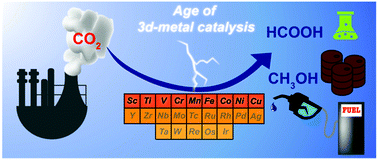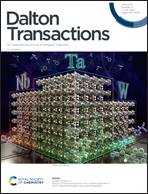Recent developments in first-row transition metal complex-catalyzed CO2 hydrogenation†
Abstract
Our modern civilization is currently standing at a crossroads due to excessive emission of anthropogenic CO2 leading to adverse climate change effects. Hence, a proper CO2 management strategy, including appropriate CO2 capture, utilization, and storage (CCUS), has become a prime concern globally. On the other hand, C1 chemicals such as methanol (CH3OH) and formic acid (HCOOH) have emerged as leading materials for a wide range of applications in various industries, including chemical, biochemical, pharmaceutical, agrochemical, and even energy sectors. Hence, there is a concerted effort to bridge the gap between CO2 management and methanol/formic acid production by employing CO2 as a C1-synthon. CO2 hydrogenation to methanol and formic acid has emerged as one of the primary routes for directly converting CO2 to a copious amount of methanol and formate, which is typically catalyzed by transition metal complexes. In this frontier article, we have primarily discussed the abundant first-row transition metal-driven hydrogenation reaction that has exhibited a significant surge in activity over the past few years. We have also highlighted the potential future direction of the research while incorporating a comparative analysis for the competitive second and third-row transition metal-based hydrogenation.

- This article is part of the themed collections: Dalton Transactions up-and-coming articles and 2022 Frontier and Perspective articles


 Please wait while we load your content...
Please wait while we load your content...